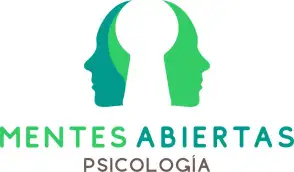Behavioral Activation (BA) is a psychological therapy designed to help individuals with depression reengage in meaningful and pleasurable activities in their daily lives. Instead of focusing on directly changing thoughts (as in cognitive therapy), BA encourages individuals to “activate” their behavior by planning and performing specific tasks that provide reward or personal meaningple, if someone used to enjoy sports before experiencing depression, BA would encourage them to gradually reintroduce that activity (e.g., playing tennis) to reconnect with positive experiences that can improve their mood .
This tategy has gained significant importance in treating depression due to its strong evidence base accumulated over decades . Depression often leavity, social withdrawal, and loss of interest, creating a vicious cycle where low mood and lack of positive reinforcement reinforce each other. Behavioral Activation breaks this cycle by encouraging individuals to reengage with life, even before feeling motivated. Numerous studies and clinical guidelines recognize BA as an effective intervention for depression, as effective as other well-established approaches and in some cases simpler and ble . In the following sections, we will exploreetical foundations of BA, discuss specific techniques for its implementation, and provide real-life examples supported by scientific research and clinical studies.
Theoretical and Scientific Foundations
Behavioral Activation is based on a behavioral model of depression. According to this perspective, life events and environmental factors can lead vulnerable individuals to experience a reduction in positive reinforcement, which triggers and maintains depressive symptoms . For example, losses, chronic stress, or personal preduce gratifying activities (such as hobbies, social interaction, exercise) while increasing avoidance behaviors (isolating, staying in bed, using alcohol to escape). Avoidance behaviors provide temporary relief from distress but ultimately prevent positive experiences, reinforcing low mood and creating a vicious cycle.
BA operates on the principle that changing behavior can change emotions . Instead of waiting for motivation or “better moods” to resume A proposes acting first, following the motto “don’t act based on your mood, act based on a plan” . Various studies support this idea. For instance, a classic study by Jacobsues found that applying only behavioral techniques (i.e., activity engagement) led to depressive symptom improvement comparable to applying full cognitive therapy . In that study, additional cognitive components (such as thought restructuring) did not benefits, suggesting that the primary active ingredient was behavioral activation itself. These findings provide scientific support for the theoretical basis of BA: increasing engagement in healthy and rewarding behaviors leads to improvements in mood and can even cause positive changes in thinking patterns.
From a learning and reinforcement perspective, BA works by restoring the individual’s contact with naturally occurring positive reinforcers in their environment (e.g., enjoyment, sense of accomplishment, social connection). By scheduling activities that provide pleasure or mastery, individuals begin to experience small mood improvements, which, when repeated, accumulate into greater overall well-being. BA also helps identify and reduce avoidance patterns that maintain depression. Many depressed patients stop engaging in even basic or enjoyable activities, which paradoxically prolongs their depression. BA interrupts this inertia by assisting individuals in engaging in valuable actions despite lacking motivation, with the expectation that behavioral change will lead to emotional change later. This approach aligns with well-established behavioral principles (such as those of Ferster and Lewinsohn on depression’s reinforcement deficits) and is increasingly supported by empirical research in clinical psychology.
Specific Strategies and Techniques
Behavioral Activation is a structured yet flexible treatment that adapts to each individual’s circumstances. Below are key strategies and techniques used in BA:
-
Activity and Values Assessment: In the initial sessions (or early stages if self-applied), individuals identify activities they have stopped doing and those that previously provided pleasure or meaning. Personal values and life domains (family, work, leisure, health) are explored to guide activation toward what truly matters.
-
Daily Activity and Mood Tracking: Individuals are encouraged to keep a daily log of activities, noting what they do each hour and rating their mood or level of satisfaction. This helps recognize how their actions (or inaction) influence their emotions and vice versa. For example, they may notice that staying in bed all morning increases sadness, while going for a walk slightly improves their mood. These records help detect avoidance patterns (e.g., idle periods during the day) and serve as a baseline for planning changes.
-
Scheduling Pleasant and Meaningful Activities: This core BA technique involves setting up a weekly activity plan, ensuring that at least one pleasurable or productive task is completed daily. The process is gradual and realistic: starting with small, manageable actions, increasing difficulty or time as the person successfully completes them. The key is to schedule and commit to actions in advance, rather than waiting to "feel like it" . For instance, a plan might include: Monday at 10:00 AM—walk in the park for 15 minutes; Tuesday at 5friend; Wednesday at 11:00 AM—tidy up the workspace.
-
Gradual Task Assignment: Similar to the previous technique, this involves breaking down overwhelming activities into smaller, more manageable steps. “Change will be easier if started small” . If a person feels overwhelmed by house cleaning, they might begin by **cleaning just one room or setting a 10-minr cleaning each day. Completing these small goals builds a sense of achievement and boosts motivation to continue.
-
Focus on Naturally Rewarding Activities: Encouraging individuals to resume hobbies or tasks that naturally feel rewarding (e.g., cooking a favorite dish, playing an instrument, gardening, walking a pet). BA emphasizes prioritizing what is intrinsically enjoyable or meaningful to the person , as these activities are more likely to improve mood.
-
Overcoming Avoidance with "Catch the TRAP": A crucial component isviduals to recognize when they are avoiding an activity due to fear, apathy, or anticipated distress and instead apply an alternative action-oriented response. A common BA tool is “Catch the TRAP” (Trigger → Response → Alternative Coping). For example, if someone feels like staying in bed due to lack of energy, BA would encourage them to take a small active step, such as getting up and stretching for five minutes.
-
Monitoring Progress and Self-Reinforcement: Keeping track of daily achievements, no matter how small (e.g., "Today I managed to water the plants and wash the dishes"), and self-rewarding for completing planned tasks (e.g., watching a favorite show after finishing an activity). Recognizing progress combats the sense of helplessness typical in depression. Therapists also provide positive reinforcement, strengthening adherence to the program.
These techniques are applied individually. Some depressed individuals may need to focus on social activities, while others might benefit from self-care tasks (getting up at a consistent time, improving sleep, eating regularly). The BA plan is personalized based on each case, following the general principles outlined above.
Scientific Evidence and Clinical Studies
Numerous clinical studies and systematic reviews confirm the effectiveness of Behavioral Activation for depression:
-
Comparable to Cognitive Therapy and Antidepressants: Several randomized controlled trials have found BA to be as effective as traditional cognitive-behavioral therapy (CBT) for reducing depressive symptoms . A Cochrane review of 53 studies with 5,495 participants concluded that BA and cognitive therapy produced similar improvements . Another found that for severe depression, BA was as effective as antidepressants and more effective than cognitive therapy .
-
Longs and Cost-Effectiveness: Studies suggest that BA's benefits persist over time, with follow-ups showing **sustained improvements for up to Moreover, BA has been shown to be cheaper and easier to implement than other therapies, making it a practical choice for public health programs .
Conclusion
ivation provides a powerful and accessible tool for managing depression. Its core principle—changing what we do to change how we feel—is strorted by scientific evidence. By gradually engaging in meaningful activities, individuals can break free from depression’s inertia and regain a sense of purpose and control. Taking action, even before feeling motivated, is the key to recovery.


